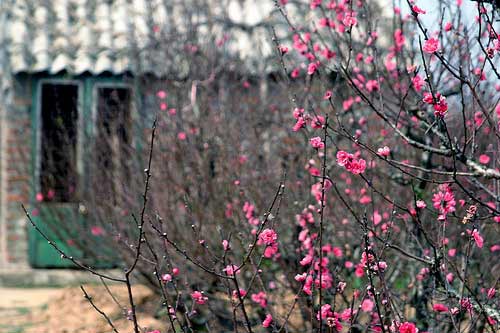Spring in the Department of Astronomy
The Lunar New Year is called Xuan Tiet. Originally means the beginning or the beginning and the Dan is the early morning. In Vietnam, spring is calculated starting from Lap Xuan period, around February 5 and ending in Lap do, about May 5.

Spring flowers.
In Astronomy, spring starts from the period of Spring Equinox, March 21 in the Northern Hemisphere and September 23 in the Southern Hemisphere. Spring ends on summer solstice, around June 21 in the northern hemisphere and December 21 in the southern hemisphere. In the Meteorology Department, spring covers the entire March, April and Year in the Northern Hemisphere and in the Southern Hemisphere is the time of September, October and November.
In the spring, the Earth's rotation axis gradually increases towards the Sun, and the illuminated hours increase gradually, equal to or greater than 12 hours a day and increase rapidly at large latitudes. The hemisphere has a spring that begins to be warmed at a fairly warm temperature, causing plants to sprout and bloom.
Before 1967, Vietnam took Beijing time as the standard for the lunar calendar. On August 8, 1967, the Democratic Republic of Vietnam issued a calendar to change the calendar to GMT +7. So the two northern north of Vietnam celebrated the Tet Offensive two different days (the north of January 29 while the south of January 30).
Currently, because of an hourly difference between Vietnam (UTC +7) and the People's Republic of China (UTC +8), Vietnamese Tet sometimes does not coincide with Chinese New Year. From 1975 to 2100, there were 4 times without overlapping; especially in 1985, the Vietnamese New Year was a month away from Chinese New Year, because in 1984 the Vietnamese lunar calendar had no leap months while the Chinese calendar was in October.
Planets with self-rotating axes that are not perpendicular to the orbital plane have seasonal phenomena, including spring. Spring in the northern hemisphere is the period of time when the planet lies at the spring equinox (Ls = 0 °) in orbit, and ends when it lies at the solstice point (Ls = 90 °). The northern hemisphere's spring coincides with autumn in the southern hemisphere, and the southern hemisphere's spring coincides with the northern hemisphere's fall.
Spring time is considered the time of development, the revival of new life (both for animals and plants) and a new life cycle begins. One of the important holidays of many civilizations in the world is the New Year celebration, which takes place in the spring; eg Chinese New Year in Vietnam.
- This year has been the earliest spring season since 1896
- An odd episode in spring
- Google Doodle reminds you of the Spring Equality Day of 2019
- Spring finger is what disease?
- Learn and prevent common diseases in the spring
- Typical flowers of spring
- Spring bird wings
- Radio astronomy and giant antennas
- Spring can come earlier with North American forests, increasing CO2 absorption
- Little known rite of traditional Japanese hot spring baths
- Spring comes earlier because of climate change
- Top 10 best astronomical apps on Android
 Van Allen's belt and evidence that the Apollo 11 mission to the Moon was myth
Van Allen's belt and evidence that the Apollo 11 mission to the Moon was myth The levels of civilization in the universe (Kardashev scale)
The levels of civilization in the universe (Kardashev scale) Today Mars, the sun and the Earth are aligned
Today Mars, the sun and the Earth are aligned The Amazon owner announced a secret plan to build a space base for thousands of people
The Amazon owner announced a secret plan to build a space base for thousands of people